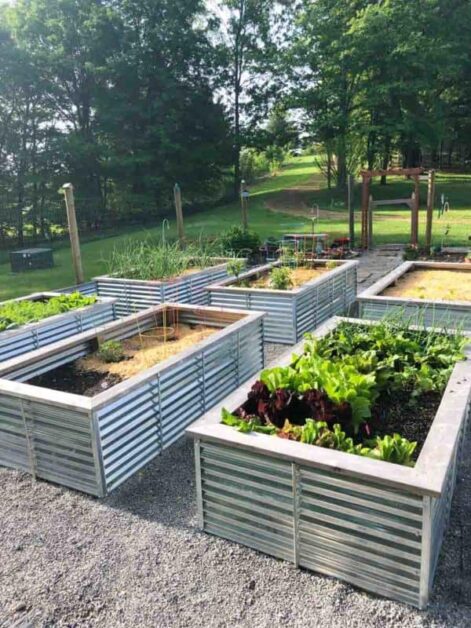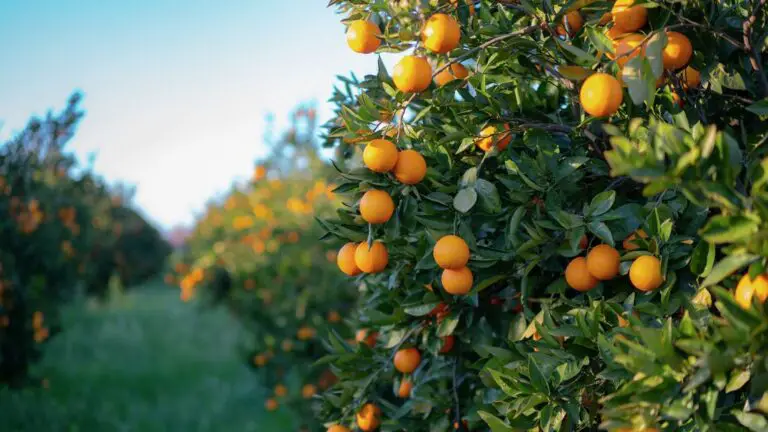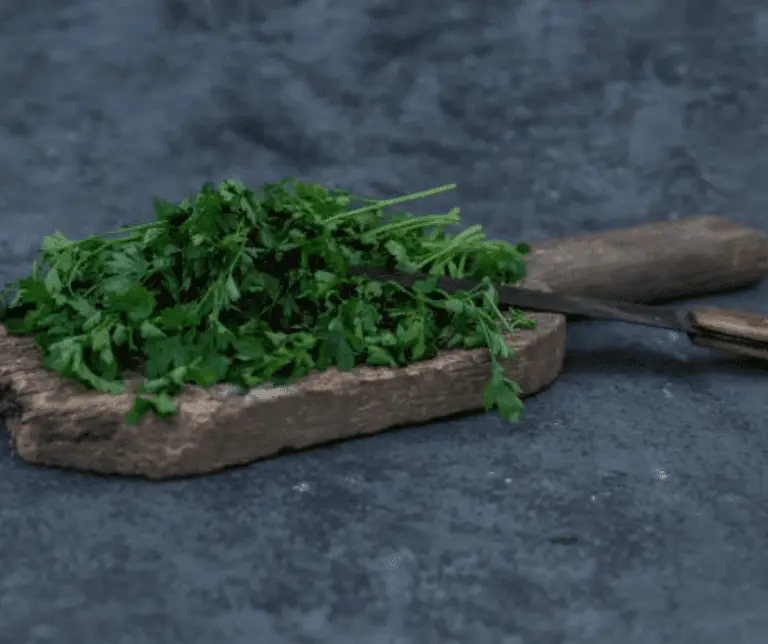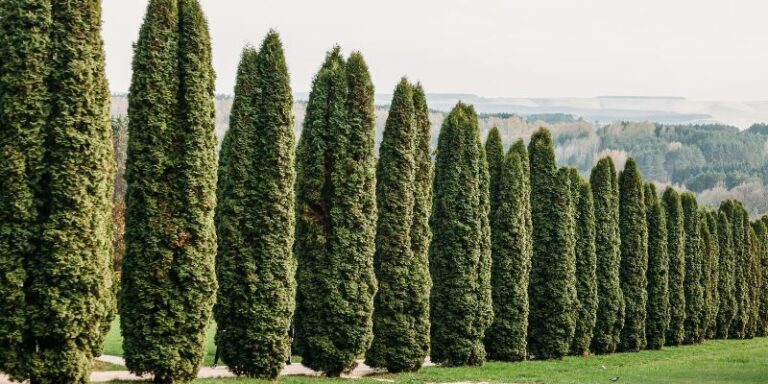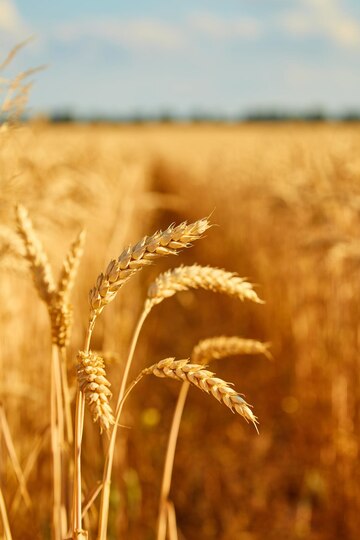How to Grow Artichoke Plants: A Guide to Growing These Nutritious and Delicious Vegetables
Table of Contents
Understanding the Artichoke Plant: An Overview of this Nutritious and Delicious Vegetable
Artichokes, scientifically known as Cynara cardunculus var. scolymus, are a unique and delectable vegetable that have been enjoyed for centuries. Native to the Mediterranean region, artichokes belong to the thistle family and are prized for their tender heart and flavorful leaves.
The artichoke plant is a perennial that can grow up to 6 feet in height. Its large, silvery-green leaves form a rosette shape, with a thorny texture that protects the heart of the plant – the prized artichoke bud. As the plant matures, it produces stunning purple flowers, blooming in a display of natural beauty.
Cultivating artichokes requires patience and proper care, but the rewards are well worth it. These versatile vegetables are not only delicious, but they are also packed with nutrition. Artichokes are a good source of dietary fiber, antioxidants, vitamins C and K, and minerals such as potassium and magnesium. Research has shown that artichokes may have various health benefits, including improved digestion, liver support, and reduced cholesterol levels.
Whether you are an experienced gardener or just starting out, understanding the artichoke plant is key to successfully growing and harvesting these nutritious and flavorful vegetables. In the following sections of this article, we will explore the various aspects of cultivating artichokes, from selecting the right location and preparing the soil to managing pests and diseases. So let’s dive in and uncover the secrets of growing and enjoying this remarkable plant.

Selecting the Perfect Location: Finding the Ideal Spot to Grow Your Artichoke Plants
When selecting the perfect location for your artichoke plants, it’s important to consider a few key factors that will contribute to their successful growth. First and foremost, artichokes thrive in areas with ample sunlight, so choose a location that receives at least 6-8 hours of direct sunlight each day. This ensures that the plants can photosynthesize efficiently and produce robust yields.
Additionally, artichokes prefer well-drained soil, so it’s crucial to find a spot that doesn’t retain excessive moisture. Standing water can lead to root rot and other diseases, which can severely harm your plants. To test the drainage of your chosen location, dig a hole approximately one foot deep and fill it with water. If the water drains within a few hours, you’ve found a suitable spot. However, if the water takes longer to drain or doesn’t drain at all, you may want to consider alternative options, such as raised beds or containers.
Preparing the Soil: Steps for Creating the Optimal Growing Environment for Artichokes
Preparing the soil is a crucial step in creating the optimal growing environment for artichokes. The first step is to ensure that the soil has good drainage. Artichokes do not do well in waterlogged soil, so it’s important to amend the soil with organic matter such as compost or well-rotted manure to improve drainage.
Additionally, artichokes thrive in slightly acidic to neutral soil, with a pH level between 6.0 and 7.5. Testing the soil pH is essential, as it will provide valuable information on whether any amendments are necessary. If the soil pH is too high or too low, the addition of substances such as sulfur or lime can be used to adjust the balance. It is recommended to conduct a soil test prior to planting artichokes to ensure the pH level is optimal for their growth.
Choosing the Right Artichoke Varieties: Exploring Different Options for Successful Growth
When it comes to choosing the right varieties of artichokes for successful growth, there are several factors to consider. Different varieties have varying levels of cold tolerance, maturity times, and sizes, which can affect their suitability for different growing conditions and preferences. Let’s explore some of the popular artichoke varieties and their unique characteristics.
One well-known variety is the ‘Green Globe,’ which is often considered the standard artichoke variety. It is a reliable choice, known for its large, rounded artichokes with thick, meaty leaves. This variety has a medium maturity time, typically taking around 150 to 180 days to reach harvest. ‘Green Globe’ artichokes are suitable for both fresh consumption and canning, making them a versatile pick for growers.
Another popular choice is the ‘Imperial Star’ variety, which is valued for its early maturity. This variety is bred for cooler climates and can be harvested as early as 90 days after planting. ‘Imperial Star’ artichokes produce medium-sized, elongated chokes that are slightly tender, making them a great option for gardeners looking to enjoy artichokes earlier in the season. Additionally, this variety is often grown as an annual in cold regions, making it more accessible to a wider range of growers.

Other noteworthy artichoke varieties include the ‘Purple of Romagna,’ known for its striking purple color and tender, sweet flavor, and the ‘Violetta di Chioggia,’ which features tender chokes with a purple blush. These varieties add visual appeal and unique flavors to the artichoke garden and are favored by culinary enthusiasts looking for distinct culinary experiences.
When choosing the right artichoke varieties, it’s crucial to consider your climate, preferences, and intended use. Take into account factors such as cold tolerance, maturity times, and flavor profiles to find the perfect artichoke variety for your garden or culinary adventures. With the right choice, you’ll be well on your way to a bountiful artichoke harvest.
• The ‘Green Globe’ variety is a reliable choice with large, rounded artichokes and thick, meaty leaves.
• ‘Green Globe’ artichokes have a medium maturity time of 150-180 days and are suitable for both fresh consumption and canning.
• The ‘Imperial Star’ variety is valued for its early maturity, with harvest possible as early as 90 days after planting.
• ‘Imperial Star’ artichokes produce medium-sized, elongated chokes that are slightly tender, making them great for early-season enjoyment.
• This variety is often grown as an annual in cold regions, expanding its accessibility to more growers.
• The ‘Purple of Romagna’ variety has a striking purple color and offers a tender, sweet flavor.
• The ‘Violetta di Chioggia’ variety features tender chokes with a purple blush, adding visual appeal to the garden and unique flavors to culinary experiences.
• Consider factors such as climate suitability, maturity times, and flavor profiles when choosing the right artichoke varieties.
• By selecting the perfect artichoke variety for your specific needs and preferences,
you can ensure a successful growth season
Starting from Seeds or Transplants: Deciding on the Best Method to Begin Your Artichoke Garden
Starting from Seeds or Transplants: Deciding on the Best Method to Begin Your Artichoke Garden
When it comes to starting an artichoke garden, one of the first decisions you’ll need to make is whether to begin from seeds or transplants. Both methods have their advantages and considerations, so it’s essential to weigh your options and choose the approach that suits your gardening goals.
Starting artichokes from seeds can be a rewarding and cost-effective choice. By germinating the seeds indoors in early spring, you have the opportunity to nurture the plants from the very beginning. This method allows you to have more control over the growth and development of your artichoke plants, giving you a sense of satisfaction and achievement. Additionally, starting from seeds provides a wider selection of artichoke varieties to choose from, giving you the flexibility to experiment with different options and find the perfect fit for your taste preferences.
Planting Techniques: Step-by-Step Instructions for Establishing Healthy Artichoke Plants
Planting artichoke plants requires careful attention to detail in order to establish healthy and productive crops. To begin, choose a location that provides full sun exposure, as artichokes thrive in areas with at least six to eight hours of direct sunlight daily. The soil should be well-draining and rich in organic matter, with a pH level between 6.5 and 7.5.
Before planting, it is essential to prepare the soil properly. Start by removing any weeds and rocks from the planting area, ensuring a clean and clear space for the artichoke plants to grow. Dig a hole that is two to three times wider and deeper than the plant’s root ball. Add compost or well-rotted manure to the hole, mixing it with the surrounding soil to improve fertility and drainage.
When it comes to selecting artichoke varieties, consider factors such as climate, garden space, and personal preferences. Different varieties have varying growth habits, sizes, and flavors, so it is important to choose the ones that align with your specific needs. Some popular varieties include ‘Green Globe,’ ‘Imperial Star,’ and ‘Purple of Romagna,’ each offering its own distinct characteristics.
Now that the location and soil are prepared, it’s time to decide whether to start from seeds or transplants. Starting from seeds gives you a wider variety of options but can be more time-consuming and require extra care. Transplants, on the other hand, offer a head start and can be more convenient for beginners. Regardless of your choice, provide the seeds or transplants with a gentle, well-drained seed-starting mix or garden soil that has been properly amended.

Gently place the seeds or transplants in the soil, ensuring they are at the appropriate depth based on the plant’s specific instructions. Space the plants according to the recommended guidelines, allowing sufficient room for growth and airflow. Once planted, lightly press down the soil around the base of the plants to ensure good soil-to-root contact.
Proper watering is crucial in the early stages of the artichoke plants’ growth. Maintain consistent moisture levels, keeping the soil evenly moist but not overly saturated. This will encourage strong root development and reduce the risk of transplant shock. As the plants establish, adjust the watering frequency according to their needs and the prevailing weather conditions.
In terms of care and maintenance, regular fertilization is essential for the optimal growth and yield of artichoke plants. Apply a balanced fertilizer, rich in nitrogen, phosphorus, and potassium, according to the package instructions. Monitor the plants for any signs of nutrient deficiencies, such as pale or yellowing leaves, and address them promptly.
While artichokes are generally considered to be relatively pest and disease resistant, it is still important to remain vigilant. Monitor the plants regularly for common pests such as aphids, slugs, and snails, and take appropriate measures to control their populations. If any diseases or abnormalities are observed, promptly diagnose the issue and treat it accordingly to prevent further damage.
In conclusion, successful artichoke plant growth starts with careful planting techniques. By selecting the right location, preparing the soil, choosing suitable varieties, and providing proper care, you can establish healthy artichoke plants that will reward you with abundant harvests in due time. Through consistent monitoring and maintenance, you can ensure the vitality and longevity of your artichoke garden. Stay tuned for our next section on watering and irrigation techniques to further bolster the success of your artichoke plants.
Watering and Irrigation: Proper Techniques to Ensure Optimal Moisture for Artichokes
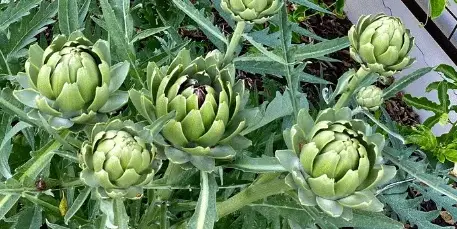
One of the key factors in successfully growing artichokes is providing them with optimal moisture levels. Adequate watering and irrigation techniques are essential to ensure that the plants receive the right amount of water without becoming oversaturated. Proper moisture management not only promotes healthy growth but also prevents common issues such as root rot and fungal diseases.
When it comes to watering artichoke plants, it is important to strike a balance. The plants require consistent moisture, but overwatering can be detrimental. A good rule of thumb is to water the plants deeply, providing enough water to saturate the soil to a depth of at least 6 inches. This encourages the roots to grow deep and establishes a strong foundation for the plant. However, it is crucial to avoid waterlogged conditions, as this can lead to root rot and other problems. To determine if the plants need watering, check the moisture level of the soil by inserting your finger or a moisture meter into the ground. If the top inch of soil feels dry, it is time to water.
Fertilizing Artichoke Plants: Understanding the Nutritional Needs of Your Crop
Fertilizing plays a crucial role in ensuring the optimal growth and development of artichoke plants. To understand the nutritional needs of your crop, it is important to consider the specific requirements of artichokes. These plants thrive in nutrient-rich soil that is well-drained, loose, and slightly acidic, with a pH range of 6.0 to 7.5.
Artichokes are heavy feeders, meaning they require a steady supply of essential nutrients throughout their growing cycle. Nitrogen (N), phosphorus (P), and potassium (K) are three primary macronutrients necessary for healthy plant growth. Nitrogen promotes leafy growth and helps in the formation of large and vigorous artichoke plants. Phosphorus aids in root development and overall plant vigor, while potassium contributes to disease resistance and fruiting.
To meet the nutritional needs of your artichoke plants, applying a balanced fertilizer with an NPK ratio of approximately 5-10-10 or 10-20-20 is recommended. This ensures a sufficient supply of all three macronutrients without excessive nitrogen that may result in lush vegetative growth at the expense of fruiting. Supplementing with organic matter, such as compost or well-rotted manure, can also improve soil fertility and provide additional micronutrients necessary for optimal artichoke growth.
Remember, regular soil testing and monitoring plant health are essential to gauge nutrient deficiencies or imbalances in your artichoke plants. Adjusting fertilizer applications accordingly can help maintain a healthy and productive artichoke garden.
Managing Pests and Diseases: Identifying and Controlling Common Artichoke Plant Issues
Managing pests and diseases is essential for maintaining healthy artichoke plants and ensuring a successful harvest. Artichokes, like any other plant, can be susceptible to various pests and diseases that can hinder their growth and productivity.
One common pest that affects artichoke plants is the aphid. These small, soft-bodied insects can quickly multiply and cause damage to the leaves and buds of the artichoke plant. Controlling aphids can be done through both cultural and chemical means. Regularly inspecting your plants and removing any infested leaves or buds can help prevent the spread of aphids. Additionally, introducing natural predators, such as ladybugs or lacewings, can serve as an effective method of biological control.
Another prevalent pest that artichoke plants may encounter is the artichoke plume moth. This caterpillar-like insect feeds on the foliage of the plant, causing defoliation and weakening the overall health of the plant. To control artichoke plume moths, it is recommended to regularly scout for eggs or larvae on the underside of leaves and handpick them off. Applying a pesticide specifically formulated for caterpillar control may also be necessary in severe infestations.
| Issue | Identification | Control and Prevention |
|---|---|---|
| Aphids | Small, soft-bodied insects, often found on new growth. | – Use insecticidal soaps or neem oil. |
| – Introduce beneficial insects like ladybugs. | ||
| – Regularly inspect and prune affected parts. | ||
| Artichoke Plume Moth | Larvae damage leaves and create webbing. | – Handpick larvae and affected leaves. |
| – Apply Bacillus thuringiensis (Bt) for caterpillar control. | ||
| – Encourage natural predators. | ||
| Powdery Mildew | White, powdery substance on leaves. | – Provide proper spacing for air circulation. |
| – Apply fungicides, including sulfur-based ones. | ||
| – Water at the base to avoid wetting foliage. | ||
| Slugs and Snails | Slimy trails on leaves and damage to foliage. | – Set up beer traps or use copper barriers to deter them. |
| – Handpick slugs and snails in the evening. | ||
| – Keep the garden clean and free of debris. | ||
| Botrytis (Gray Mold) | Brown spots on leaves, fuzzy gray mold on affected areas. | – Remove affected plant parts promptly. |
| – Improve air circulation by proper spacing. | ||
| – Apply fungicides as a preventive measure. | ||
| Thrips | Tiny insects causing stippling on leaves. | – Use reflective mulches to deter thrips. |
| – Introduce predatory insects like minute pirate bugs. | ||
| – Apply insecticidal soap or neem oil. |
In addition to pests, artichoke plants can also suffer from various diseases such as powdery mildew, rust, and bacterial wilt. These diseases can lead to leaf discoloration, stunted growth, and even plant death if not properly managed. Utilizing proper cultural practices such as ensuring adequate air circulation, spacing plants appropriately, and practicing crop rotation can help prevent the onset of these diseases. Additionally, applying fungicides or bactericides, if necessary, can aid in controlling the spread and severity of these diseases.
Overall, managing pests and diseases in artichoke plants is crucial for their overall health and productivity. By implementing preventive measures, regularly monitoring for any signs of infestation, and employing appropriate control methods, gardeners can enjoy thriving artichoke plants and a bountiful harvest.
Pruning and Harvesting: Techniques for Maintaining Healthy Plants and Enjoying Bountiful Yields
When it comes to maintaining healthy artichoke plants and enjoying bountiful yields, proper pruning and harvesting techniques are crucial. Pruning helps to stimulate growth, control the size of the plant, and promote the development of multiple heads. Additionally, it allows for better air circulation, reducing the risk of diseases and pests. Harvesting, on the other hand, ensures optimal flavor and tenderness, as well as encourages the growth of new artichokes.
To start, it’s essential to prune artichoke plants in early spring before new growth emerges. Begin by removing any dead or damaged leaves, as well as any suckers or offshoots that divert energy away from the main plant. Reach down to the base of the plant and cut these shoots as close to the crown as possible. This encourages larger and more productive artichoke heads. It’s important to note that removing too many leaves may stress the plant, so it’s best to strike a balance between maintaining the health of the plant and maximizing yield.
When it comes to harvesting artichokes, timing is key. The ideal time to harvest is when the artichoke heads are fully formed but still compact and tightly closed. They should appear plump and feel firm when gently squeezed. Use a sharp knife or pruners to cut the stem around two inches below the base of the head. Avoid tearing or twisting the artichokes, as this can damage the plant and reduce future yields. Regular harvesting not only ensures the best flavor and quality but also stimulates the growth of new artichokes on the same plant.
Extending the Artichoke Season: Tips for Maximizing the Harvest and Prolonging Plant Productivity
Extending the artichoke season requires careful planning and implementation of key strategies. By maximizing the harvest and prolonging plant productivity, gardeners can enjoy a bountiful supply of these versatile vegetables for an extended period of time. Here are a few expert tips to help you achieve this goal.
First, consider staggering your planting schedule. By planting artichoke seeds or transplants at different times throughout the growing season, you can ensure a continuous harvest. This method allows for a steady supply of artichokes as the plants mature at different rates.
Another effective technique is to regularly remove any spent or damaged artichoke heads. This encourages the plant to produce more buds, extending the harvest period. Additionally, pruning off dead or yellowing leaves not only improves the plant’s appearance but also helps divert energy towards new growth.
Moreover, providing adequate nutrition is crucial for maximizing artichoke productivity. Incorporating a balanced fertilizer with a higher potassium content can promote flower bud development and yield more tender artichokes. Regularly feeding the plants during their active growth periods will provide them with essential nutrients to thrive.
These strategies, when implemented correctly, can significantly prolong the artichoke season and enhance overall plant productivity. With proper planning and care, gardeners can enjoy an extended harvest of this delicious and nutritious vegetable.
Culinary Delights: Exploring Delicious Recipes and Unique Uses for Artichokes
Artichokes, with their unique flavor and tender hearts, are not only delicious on their own but also incredibly versatile in various culinary creations. From savory appetizers to indulgent main dishes, these nutrient-packed vegetables are a delight to explore in the kitchen.
When it comes to artichoke recipes, one classic dish stands out: the iconic Spinach and Artichoke Dip. This creamy and flavorful appetizer combines tender artichoke hearts with spinach, cheese, and a blend of spices for a crowd-pleasing treat. Whether served with crispy tortilla chips or toasted baguette slices, this dip is sure to be a hit at any gathering.
If you’re craving a lighter option, consider a vibrant Artichoke and Quinoa Salad. This refreshing dish brings together the goodness of cooked quinoa, freshly chopped vegetables, and marinated artichoke hearts. Tossed with a zesty dressing made from lemon juice and olive oil, it offers a delightful blend of textures and flavors that will leave your taste buds satisfied.
As you embark on your artichoke culinary journey, don’t shy away from experimenting with unique combinations and innovative recipes. From artichoke-stuffed chicken breasts to creamy artichoke pasta, the possibilities are simply endless. So, roll up your sleeves, gather your ingredients, and let the artichoke’s deliciousness capture your imagination in the kitchen.
In the culinary world, artichokes are beloved for their unique flavor and versatility. Beyond being a delicious addition to salads, dips, and pasta dishes, artichokes offer a host of health benefits. Packed with nutrients like vitamin C, vitamin K, and folate, artichokes have been shown to support digestion, contribute to heart health, and even provide relief from various ailments.
Aside from their nutritional value, artichokes are also lauded for their role in promoting a healthy gut. These vegetables are high in fiber, which helps regulate digestion and promotes the growth of beneficial gut bacteria. Additionally, artichokes contain compounds called flavonoids, which have been linked to reducing inflammation in the body and protecting against certain chronic diseases.
With their distinct taste and health benefits, it’s no wonder that artichokes have earned a spot in both gourmet kitchens and health-conscious households. As we delve deeper into the world of artichokes, we’ll uncover tips and techniques for selecting the ideal varieties, cultivating thriving plants, and prolonging the harvest season. Whether you’re a seasoned gardener or embarking on your first vegetable garden adventure, this comprehensive guide will equip you with the knowledge and skills needed to grow and enjoy this nutritious and delicious vegetable.
How long does it take for an artichoke plant to mature?
An artichoke plant typically takes about 1 to 2 years to reach maturity and start producing edible artichokes.
Can artichoke plants tolerate cold temperatures?
Yes, artichoke plants are generally hardy and can tolerate cold temperatures down to 20°F (-7°C) if properly protected.
Do artichoke plants require a lot of maintenance?
Artichoke plants require moderate maintenance, including regular watering, fertilizing, and occasional pruning. However, with proper care, they can be quite resilient and productive.
Can I grow artichokes in containers or pots?
Yes, artichokes can be grown in containers or pots as long as they have sufficient space for their roots to grow and proper drainage.
Are artichokes suitable for growing in small gardens?
Yes, artichokes can be grown in small gardens, especially compact or dwarf varieties that require less space.
Can artichokes be grown in hot climates?
While artichokes prefer cooler climates, some varieties are more tolerant of heat. Adequate shade and regular watering are crucial for successful growth in hot climates.
Are artichokes susceptible to any specific pests or diseases?
Artichoke plants can be prone to pests such as aphids, slugs, and snails. Diseases such as botrytis and powdery mildew can also affect them. Proper pest management and regular inspections can help prevent and control these issues.
Can I eat the entire artichoke plant?
While the edible part of an artichoke plant is the flower bud, the leaves and stems are generally not consumed. However, some parts of the plant can be used to make teas or extracts with potential health benefits.
Can I harvest artichokes more than once in a season?
Artichokes are typically harvested once the flower buds are fully formed, and they can be harvested multiple times during the growing season. Regular harvesting encourages new bud development.
What are some common culinary uses for artichokes?
Artichokes can be enjoyed in various culinary preparations, such as steamed, grilled, or stuffed. They are often used in dips, salads, pasta dishes, and as a pizza topping.

Pallavi Gupta is a burgeoning writer at SouthElMonteHydroponics, blending her passion for data analysis with a keen interest in biotechnology. Currently pursuing a Bachelor’s in Biotechnology at Amity University, Pallavi delves into the intricacies of life sciences while gaining hands-on experience in the exciting world of data analysis. Her unique background provides a fresh perspective on hydroponic farming, as she explores the intersection of biotechnology and sustainable agriculture. Through her writing, Pallavi aims to bridge the gap between data-driven insights and innovative farming practices, inspiring others to harness technology for a greener future.

